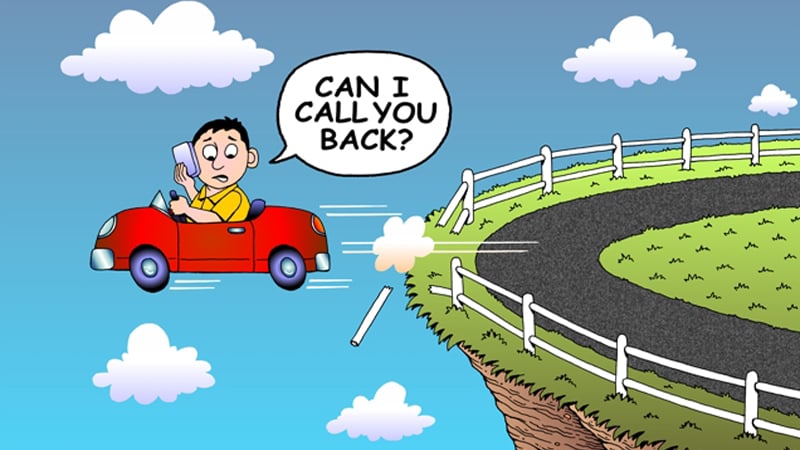Avoid Distracted Driving
Driving is a daily necessity for us. For some of us, the most dangerous thing we do every day is drive to and from the many work and project locations. For others, driving is simply part of the job. In order to complete these tasks safely, on a daily basis, we must practice defensive driving. Distracted driving is the leading factor in fatal and serious vehicle accidents. Driver distractions are anything that takes your focus away from the primary task of driving. The biggest challenge is that drivers don't understand or realize that talking or texting on a mobile device distracts the brain and takes focus away from the primary task of driving safely. This cognitive distraction still exists with the use of a hands-free device or having passenger conversations.

Active defensive driving is the action taken to reduce the risk of accident or collision by anticipating dangerous situations, despite adverse conditions and the actions or mistakes of others. This can be achieved through adherence to a variety of general rules and incorporating a set of specific driving techniques into our everyday commute.
- Maintain your patience. Do not become angry or frustrated at the actions of other drivers.
- Always keep your eyes moving, constantly looking at your side and rearview mirrors, ahead, behind and to both sides of the vehicle. Look out for motorcycles, bicycles, pedestrians and smaller vehicles.
- Always use turn signals and be sure to signal ahead of time to communicate your intensions to other drivers. When changing lanes, physically turn your head around to check your blind spot, followed by checking your side and rearview mirrors.
- Pay careful attention at intersections, not all drivers will make complete stops. Some may try to cut in front of you.
- Follow the speed limit and pay attention at all times. Always give yourself an out, move ahead or drop behind them to allow yourself room for maneuvering in case something happens.
Mobile phones are among the top driver distractions. Those who talk on the phone while driving are five times more likely to have an accident, while those who text are 23 times more likely to get in an accident while driving. Whenever possible, safely pull over to a clear area on the side of the road before using the mobile device. Make sure you park your vehicle and activate your hazard lights. If necessary, use a handsfree device when driving such as a Bluetooth connection. Cell phones distract drivers in three ways:
- Visually - Eyes off the road to check emails or incoming texts and calls.
- Mechanically - Hands off the wheel to unlock cell phone or reply to text/email - or dial a number.
- Cognitively - Mind off driving due to content of text or conversation.
Subscribe Today!
Stay-in-the-know and subscribe to our blog today!